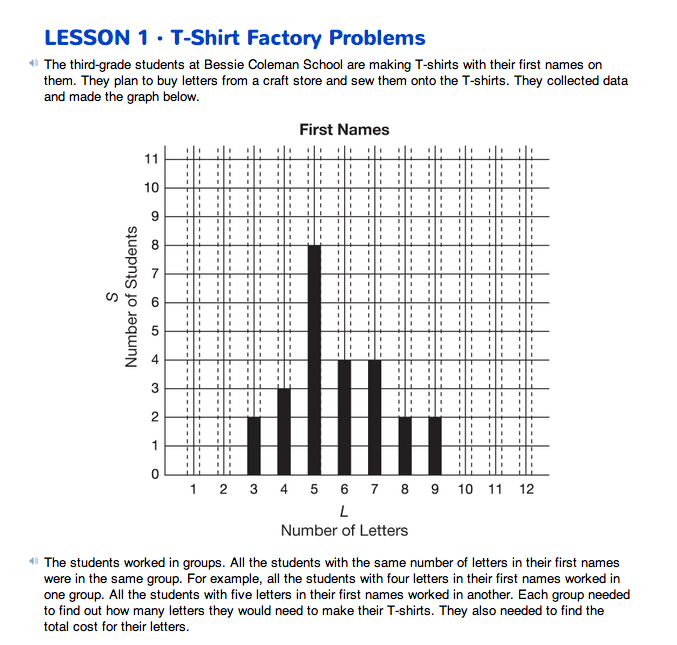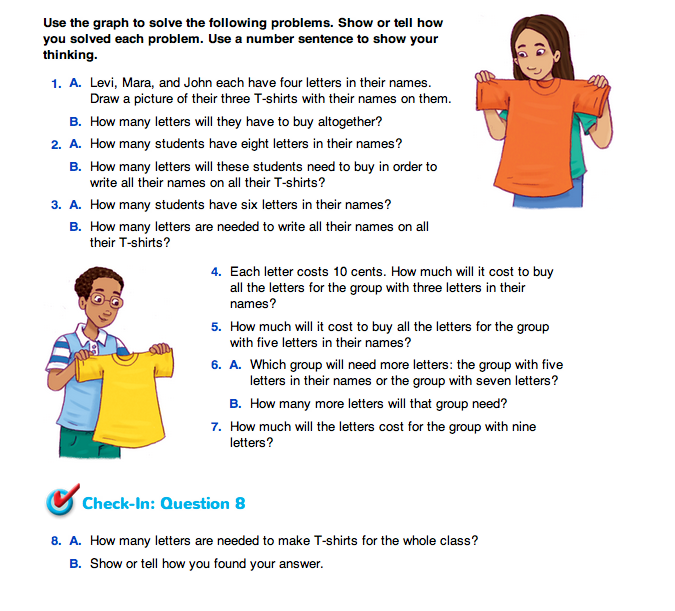
Students with different learning styles benefit from seeing and hearing different strategies used to solve problems.
“Recent reforms in mathematics education emphasize that learning mathematics is an active process, one that involves students in exploring ideas, making and investigating conjectures, discovering relationships, representing ideas, and justifying thinking. Such activity often results when students pursue real mathematical problems or explore open-ended tasks, that is, problems for which they don't already recognize a procedure that will lead them to a solution or tasks that may be completed in a variety of ways. When exploring these types of problems, students wrestle with ideas and are less likely to follow the same solution paths. Allowing for different approaches to mathematical tasks can lead to rich discussions that help students establish and agree on facts, construct and utilize procedures, and develop and solidify concepts. This way of teaching has two advantages: It supports deeper mathematical thinking and it supports alternative learning preferences” (Math for All: Differentiating Instruction, Grades 3–5, p. 29, 2007).
Share Invented Strategies to Multiply. Ask students to imagine that all the students in class will decorate T-shirts with their first names. Each student then draws a picture of a T-shirt and writes his or her first name on the shirt. You may also choose to use the Design Your Own T-Shirt Master. Below the T-shirt, each student should write the number of letters in his or her name.
Organize students in groups based on the number of letters in their names. For example, all students with four letters in their first names will form one group. Ask each group to solve the following problem and carefully record their solutions and strategies to share with the class.
- Every student in your group will sew his or her name on a T-shirt. At a craft store, letters cost 10 cents each. How much will it cost to buy all the letters for your group?
Before groups begin their work, ask the following:
- What tools can you use to help you solve this problem and communicate your thinking? (Possible responses include: pictures, counters, calculators, and number sentences.)
Although this problem lends itself to multiplication, groups may choose to use other strategies, such as repeated addition or skip counting.
As students share their solutions with the class, highlight the various strategies, emphasizing the link between multiplication sentences and student solutions. For example, one group of five students who each had a four-letter name shared the following solution:
“Each name costs 40 cents. This is the number sentence we used to show the cost of each name, 10 + 10 + 10 + 10 = 40 cents. Since there are five people in our group, the total cost is 40 + 40 + 40 + 40 + 40 = 200 cents or two dollars.”
Another group of four students who each had a five-letter name shared the following solution:
“Each name costs 50 cents, so together our names cost $2.00.
5 letters x 10 cents = 50 cents for the letters on each T-shirt. Since there are four people in our group, the total cost is 50 + 50 + 50 + 50 = 200 cents or two dollars.”
Help students connect these strategies to multiplication strategies and representations.
- I see that you used repeated addition when you added the cost of each name. Is there another way that you could show this cost using multiplication? (Yes, we could multiply 10 times 4 to get 40.)
- What number sentence should you write to show this problem? (10 × 4 = 40)
- Look at the number sentence you used to show how you found the total cost for your letters. What multiplication number sentence could you write to show how you found the total cost? (We could write 40 × 5 = 200.)
The following is an example of another student using skip counting to find the total cost. This example is followed by a suggested teacher prompt to link this strategy to multiplication.
“Our group has six students, and we each have 5 letters in our name. That is 6 × 5 or 30 letters. Since each letter is 10 cents, the total cost is thirty tens. I skip counted by tens thirty times and got 300 cents, or three dollars.”
- I see that you used a multiplication sentence to show how many letters your group will need and then you used skip counting to find the total cost. Is there a way that you could use multiplication to find the total cost? (We could multiply 30 × 10 to find the answer. 30 × 10 = 300 cents, or three dollars.)
Use Invented Strategies to Multiply. Introduce the graph on the T-Shirt Factory Problems page in the Student Guide.
Read the introduction and then use a display of the page and the following prompts to guide a class discussion:
- What are the labels for the horizontal axis and the vertical axis? (L, Number of Letters; S, Number of Students)
- Which numbers on the graph indicate the number of students? (The numbers along the vertical axis.)
- Which numbers on the graph indicate the number of letters in the first names? (The numbers along the horizontal axis.)
- How many students have four letters in their first names? How do you know? (3 students. I found the bar that went up from 4 letters. It goes up to 3. That means 3 students.)
- How many students have seven letters in their first names? How do you know? (4 students. I looked at the bar for 7 letters. It goes up to 4. That is 4 students.)
- How many more students have five letters than four letters? How do you know? (5 students. The bar above 5 letters goes up to 8 students. The bar above 4 letters goes up to 3 students, 8 − 3 = 5.)
- There were eight students in one of the groups. How many letters do these students have in their names? How do you know? (5 letters. I found the bar that goes up to 8 students. I read the label under that bar—it was 5 letters.)
Once students are familiar with the graph, organize them into groups of three or four and ask them to solve Questions 1–7 in the Student Guide.
As the groups are working, move around the room checking their progress.
The following prompts can be used as you interact with each group:
- Tell me how you found your answer.
- Use a number sentence to show your thinking.
- Show me how you can check your answer. (I used another strategy.)
Share and Compare Strategies. During the class discussion of Questions 1–7, ask students to share the strategies their group used to arrive at their solution. Emphasize the use of varied approaches and connect them to multiplication where appropriate.
Use T-Shirt Factory Problems Check-In: Question 8 in the Student Guide and the corresponding Feedback Box in the Teacher Guide to assess student progress toward the following expectations: use strategies to solve multiplication problems [E3] and solve two-step word problems involving multiplication [E4]. The corresponding Feedback Box can also be used to assess progress on the following Math Practices Expectations: Know the problem [MPE1]; Check my calculations[MPE4]; and Show my work [MPE5].
The Workshop in Lesson 6 provides targeted practice with solving and representing word problems involving multiplication.















